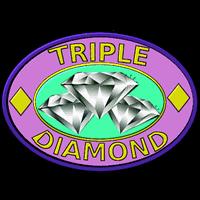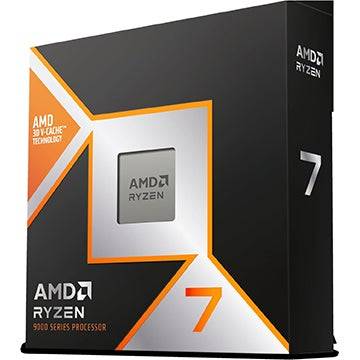DLSS: Enhancing Gaming Performance Explained
Nvidia's DLSS, or Deep Learning Super Sampling, stands as a revolutionary technology in the realm of PC gaming, significantly enhancing performance and extending the life of Nvidia's graphics cards. Since its introduction in 2019, DLSS has seen numerous updates, improving its functionality and effectiveness across Nvidia's RTX series. In this guide, we'll explore what DLSS is, its mechanics, the differences between its versions, and its importance, even if you're not currently using an Nvidia graphics card.
Additional contributions by Matthew S. Smith.
What Is DLSS?
Nvidia DLSS, short for Deep Learning Super Sampling, is a proprietary technology designed to boost both performance and image quality in video games. The term "Super Sampling" reflects its ability to upscale games to higher resolutions using Nvidia's neural network, trained on extensive gameplay data. This method allows for a higher resolution display with less performance impact than traditional methods.
Beyond its initial upscaling capabilities, DLSS now encompasses several systems to enhance image quality. These include DLSS Ray Reconstruction, which refines lighting and shadows using AI; DLSS Frame Generation and Multi Frame Generation, which use AI to insert additional frames for smoother gameplay; and DLAA, or Deep Learning Anti-Aliasing, which enhances graphics beyond native resolution capabilities.
Super Resolution, the most recognized feature of DLSS, is particularly beneficial when paired with ray tracing. In DLSS-supported games, you'll find options like Ultra Performance, Performance, Balanced, and Quality modes. For instance, selecting 4K resolution with DLSS Quality mode in games like Cyberpunk 2077 will render the game at 1440p and upscale it to 4K, significantly boosting frame rates due to the lower rendering resolution and AI-driven upscaling.
DLSS's neural rendering differs from older techniques such as checkerboard rendering. It adds details not visible at native resolution and preserves details lost in other upscaling methods. However, it can introduce artifacts like "bubbling" shadows or flickering lines, though these have been significantly reduced with DLSS 4.
The Generational Leap: DLSS 3 to DLSS 4
With the RTX 50-series, Nvidia introduced DLSS 4, which utilizes a new AI model, the Transformer Neural Network (TNN), enhancing the system's quality and capabilities. DLSS 3 and its 3.5 update used a Convolutional Neural Network (CNN), analyzing scenes based on spatial relationships. In contrast, the TNN in DLSS 4 can process twice as many parameters, offering deeper scene understanding and better handling of long-range patterns.
This advancement significantly improves DLSS Super Sampling and DLSS Ray Reconstruction, preserving finer details for sharper gameplay. DLSS 4 also introduces DLSS Multi Frame Generation, capable of generating four artificial frames per rendered frame, dramatically boosting frame rates while Nvidia Reflex 2.0 minimizes input latency.
Despite these advancements, DLSS Frame Generation can occasionally cause minor ghosting. Nvidia advises adjusting frame generation settings to match your monitor's refresh rate to avoid issues like screen tearing and visual artifacts.
Even without an RTX 50-series card, you can leverage the new TNN model for DLSS Super Resolution and DLSS Ray Reconstruction via the Nvidia App, which also supports DLSS Ultra Performance mode and DLAA.
Why Does DLSS Matter for Gaming?
DLSS is a game-changer for PC gaming, especially for those with mid-range or lower-performance Nvidia graphics cards. It enables higher graphics settings and resolutions, extending the life of your GPU. As graphics card prices rise, DLSS offers a cost-effective way to maintain playable frame rates by adjusting settings or performance modes.
Moreover, DLSS has spurred competition, with AMD's FidelityFX Super Resolution (FSR) and Intel's Xe Super Sampling (XeSS) entering the market. While DLSS leads in image quality and frame generation capabilities, these technologies collectively lower the performance-to-price barrier in PC gaming.
Nvidia DLSS vs. AMD FSR vs. Intel XeSS
Nvidia's DLSS faces competition from AMD's FSR and Intel's XeSS. DLSS 4 provides a significant advantage with its superior image quality and multi-frame generation with minimal latency. While all three technologies offer upscaling and frame generation, DLSS generally delivers a crisper, more consistent image with fewer artifacts.
It's worth noting that DLSS is exclusive to Nvidia graphics cards and requires game developer implementation, unlike the more universally supported FSR. Despite this, the number of DLSS-supported games continues to grow, covering many high-profile titles.
Conclusion
Nvidia DLSS has transformed the gaming industry and continues to evolve. Its ongoing improvements demonstrate Nvidia's commitment to enhancing gaming experiences and extending the utility of their graphics cards. While not perfect, DLSS offers impressive performance and visual enhancements, making it a valuable tool for gamers.
With AMD and Intel introducing their own upscaling technologies, the competition is fierce, yet DLSS remains at the forefront. As a gamer, it's crucial to weigh the cost and features of your GPU against the games you play to find the best value.
-
The Heaven Burns Red team is thrilled to announce the game's 100-Day Anniversary event, packed with exciting new content, including fresh storylines, Memorias, and challenges. The celebration kicks off today, February 21st, and will run until March 20th. Get ready to dive into a world of adventure aAuthor : Emily Apr 09,2025
-
Attention all discard deck enthusiasts in *Marvel Snap*! Khonshu, the God of the Moon, has graced the game with his presence, and he's bringing a powerful twist to discard strategies. This card, one of the most intricate released by Second Dinner to date, deserves a deep dive into how it functions aAuthor : David Apr 09,2025
-
 Dream Wedding Planner GameDownload
Dream Wedding Planner GameDownload -
 DreamVilleDownload
DreamVilleDownload -
 Dream House DaysDownload
Dream House DaysDownload -
 Onet MatchDownload
Onet MatchDownload -
 Shelf Sort: Goods Sort & PackDownload
Shelf Sort: Goods Sort & PackDownload -
 Castle - Make & PlayDownload
Castle - Make & PlayDownload -
 Nextbots Sandbox PlaygroundDownload
Nextbots Sandbox PlaygroundDownload -
 My Cute Otome Love Story GamesDownload
My Cute Otome Love Story GamesDownload -
 Drive Range Rover Sport DriftDownload
Drive Range Rover Sport DriftDownload -
 Mini Micro Mall - Tycoon GameDownload
Mini Micro Mall - Tycoon GameDownload
- WoW Patch 11.1: Character Customization Update, Restrictions Apply
- "Path of Exile 2 Developers Address Key Issues and Share 10-Week Early Access Results"
- Disney Mirrorverse Announces EOS By The End Of This Year
- Top Classic Board Games for 2025
- Roblox Simulator Codes: Unlock Exclusive Rewards!
- Whip Up Delish Food In The Play Together x My Melody & Kuromi Crossover!













